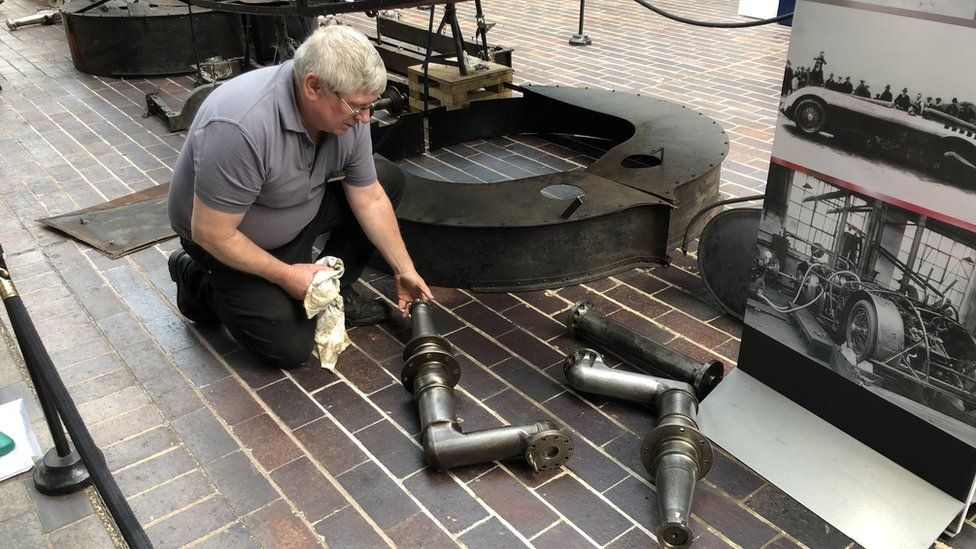National Motor Museum starts restoring Sunbeam 1000hp
- Published

Ian Stanfield with machined parts which passed crack testing
Work is under way to restore a British car that broke the land speed record almost 100 years ago.
Restoration to the Sunbeam 1000hp is being carried out at The National Motor Museum in Beaulieu, Hampshire.
Nicknamed The Slug, it was the first car to exceed 200mph in 1927 along Daytona beach in Florida, USA, with Maj Henry Segrave at the wheel.
The car, which was built in Wolverhampton, has not been run since the 1930s.
It is powered by two aircraft engines, but over time oil in the engines, brakes and chains have hardened and formed a glue-like substance that now needs to be removed by laser.
Engineers at the motor museum sprayed a solution with magnetic particles onto the metal which, when viewed in ultraviolet light, reveals any cracks
Senior engineer Ian Stanfield said: "Oils of this period were vegetable-based, rather than mineral-based.
"Once they've gone through a heat cycle, they tend to solidify, very much like cooking fat.
"The oils in this engine and gearbox have been left for 80-odd years. So they're not only solid, they're almost like glue."
Engineers at the motor museum sprayed a solution with magnetic particles onto the metal which, when viewed in ultraviolet light, reveals any cracks.
They also found a spanner which had been "glued" to the chassis by oil since the world record run.
Major Henry Segrave with Sunbeam 1000hp at Daytona Beach in Florida
Mr Stanfield said the car has completed fewer than 70 miles in its 97 years.
The restoration work comes after a museum in Wolverhampton launched an initiative to track down relatives of workers who helped build the car.
The National Motor Museum is now campaigning to raise £300,000 to complete the work, with £50,000 raised so far.
Chief engineer Doug Hill said: "The best way to preserve a motor vehicle is to have it in running order.
"The ambition is to take this car to Daytona three years from now, and run it down the same part of the beach, 100 years to the day after Segrave took it and won the land speed record at 203 miles an hour."
The car's chassis is currently on display in the Beaulieu museum, with only the wooden steering wheel still in place.
Follow BBC South on Facebook, external, X, external, or Instagram, external. Send your story ideas to south.newsonline@bbc.co.uk or via WhatsApp on 0808 100 2240, external.
Related Topics
- Published16 November 2023
- Published24 July 2017
- Published9 May 2014